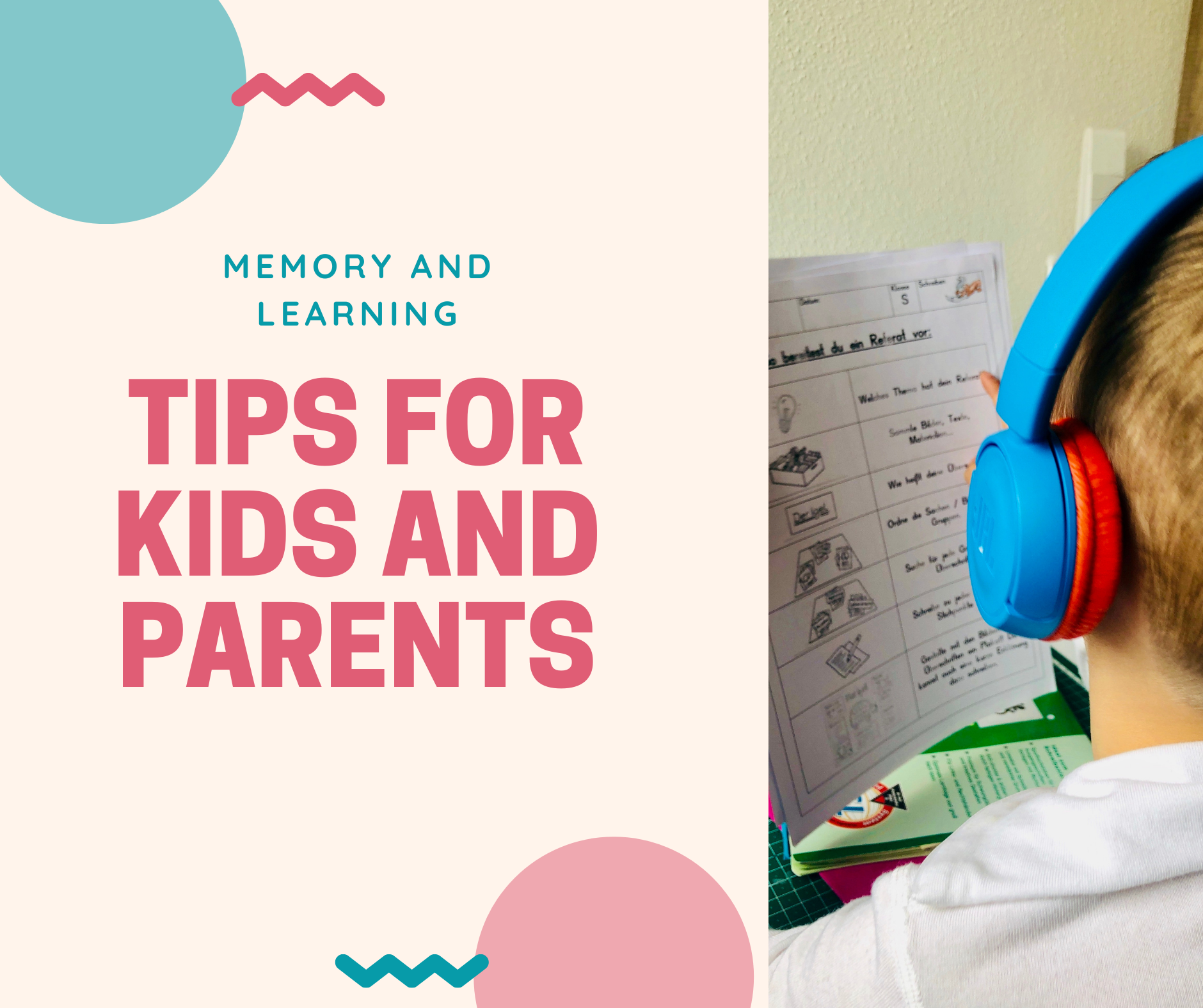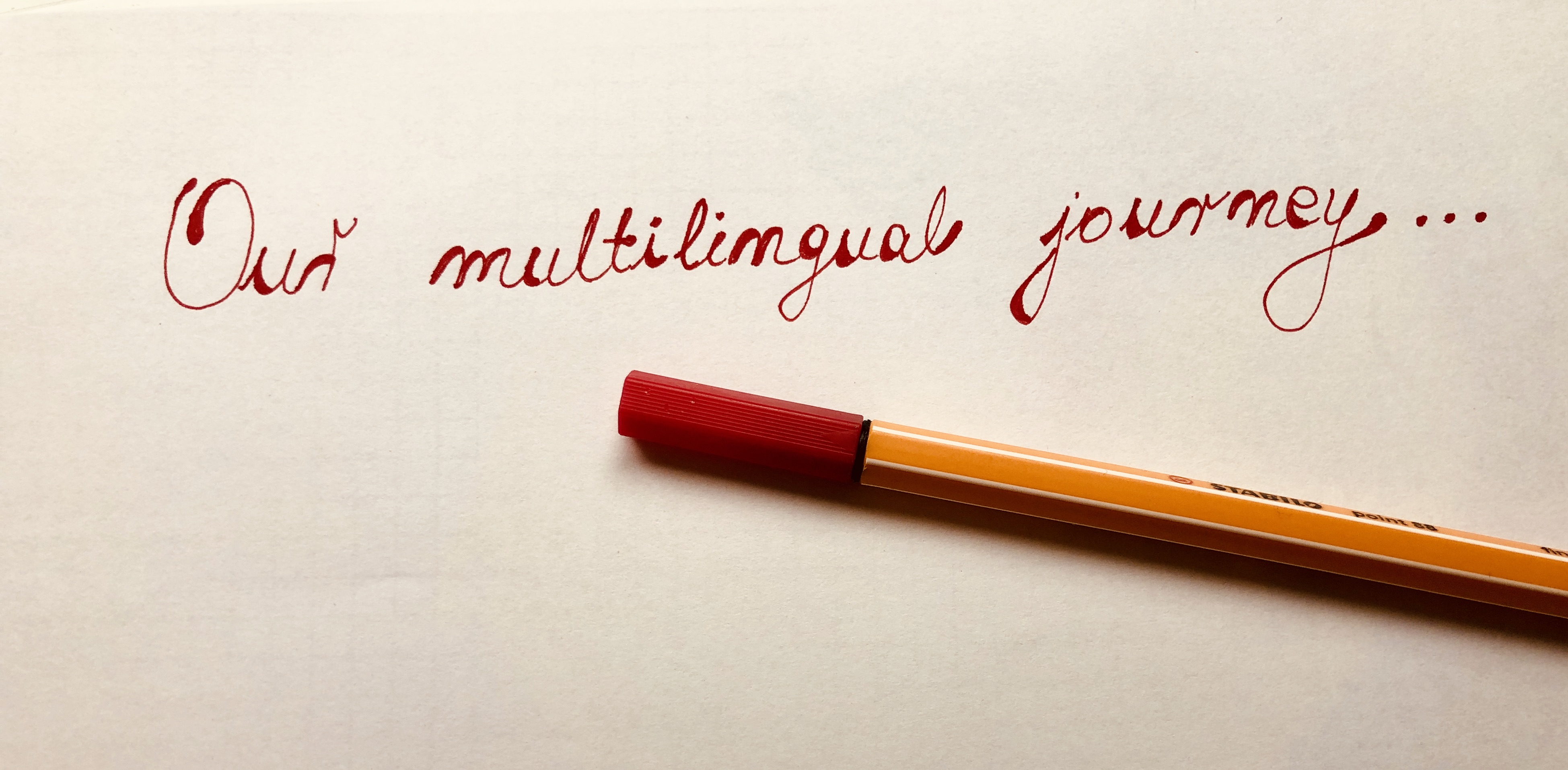How to Make Coral Reef Animals - Crafts and Facts for Kids
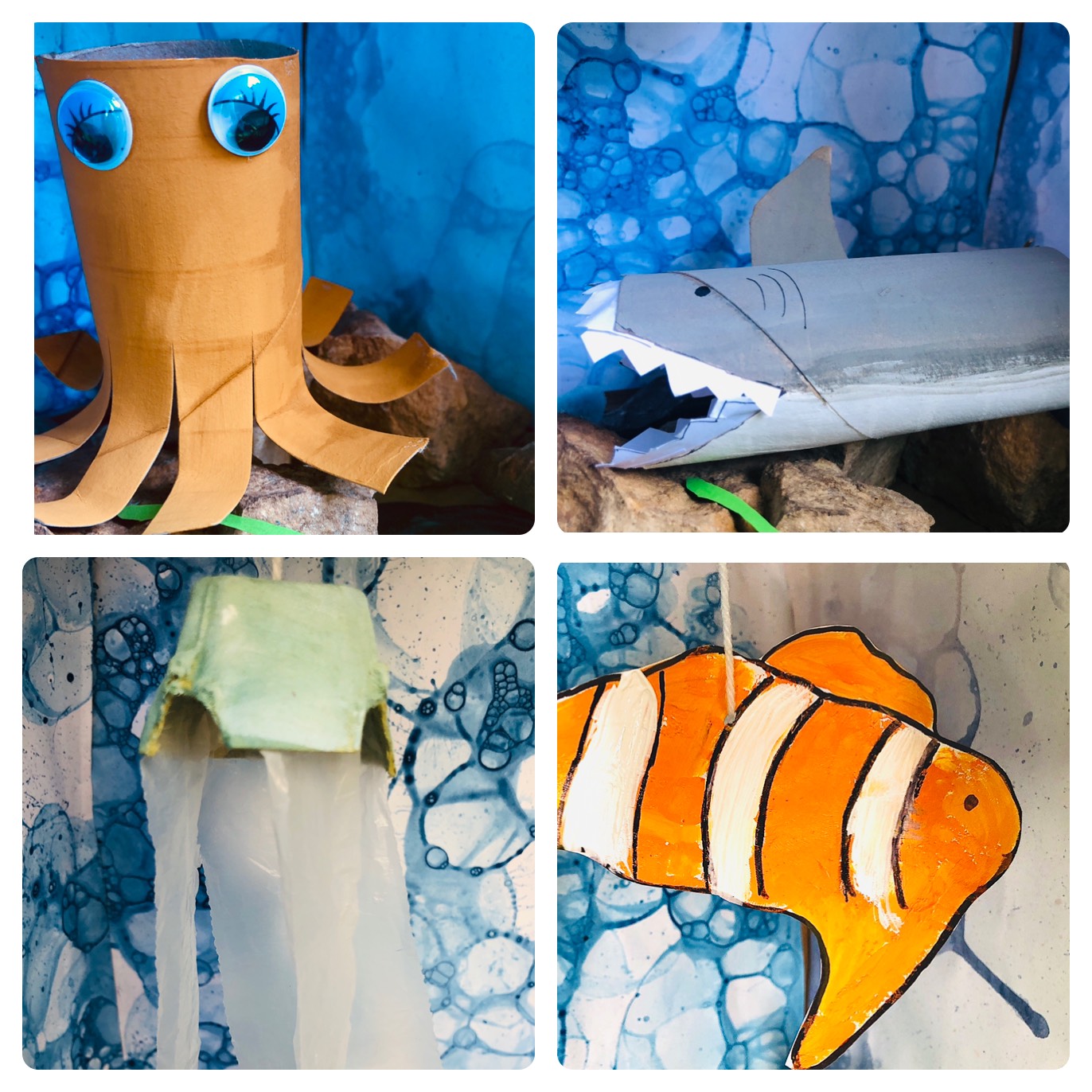
These animals are part of our coral reef project. We upcycled some lids, plastic bags, and toilet paper rolls and, in the process, learned something new.
Interesting facts about clownfish:
- Clownfish are born male and can change into a female. OK, I had no idea about this one.
- Clownfish bodies have a mucus layer which is immune to the toxins the anemone produces to capture prey.
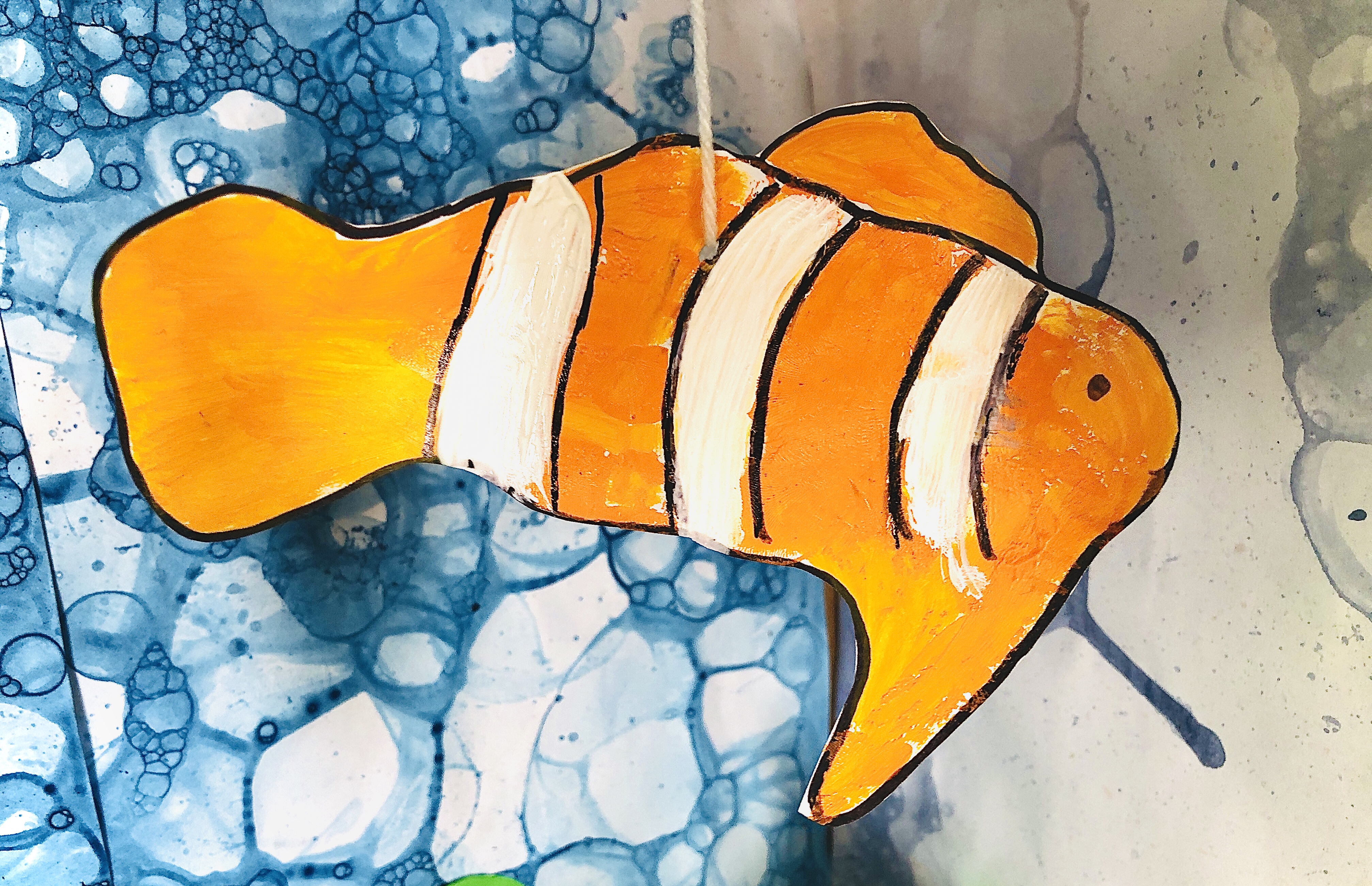
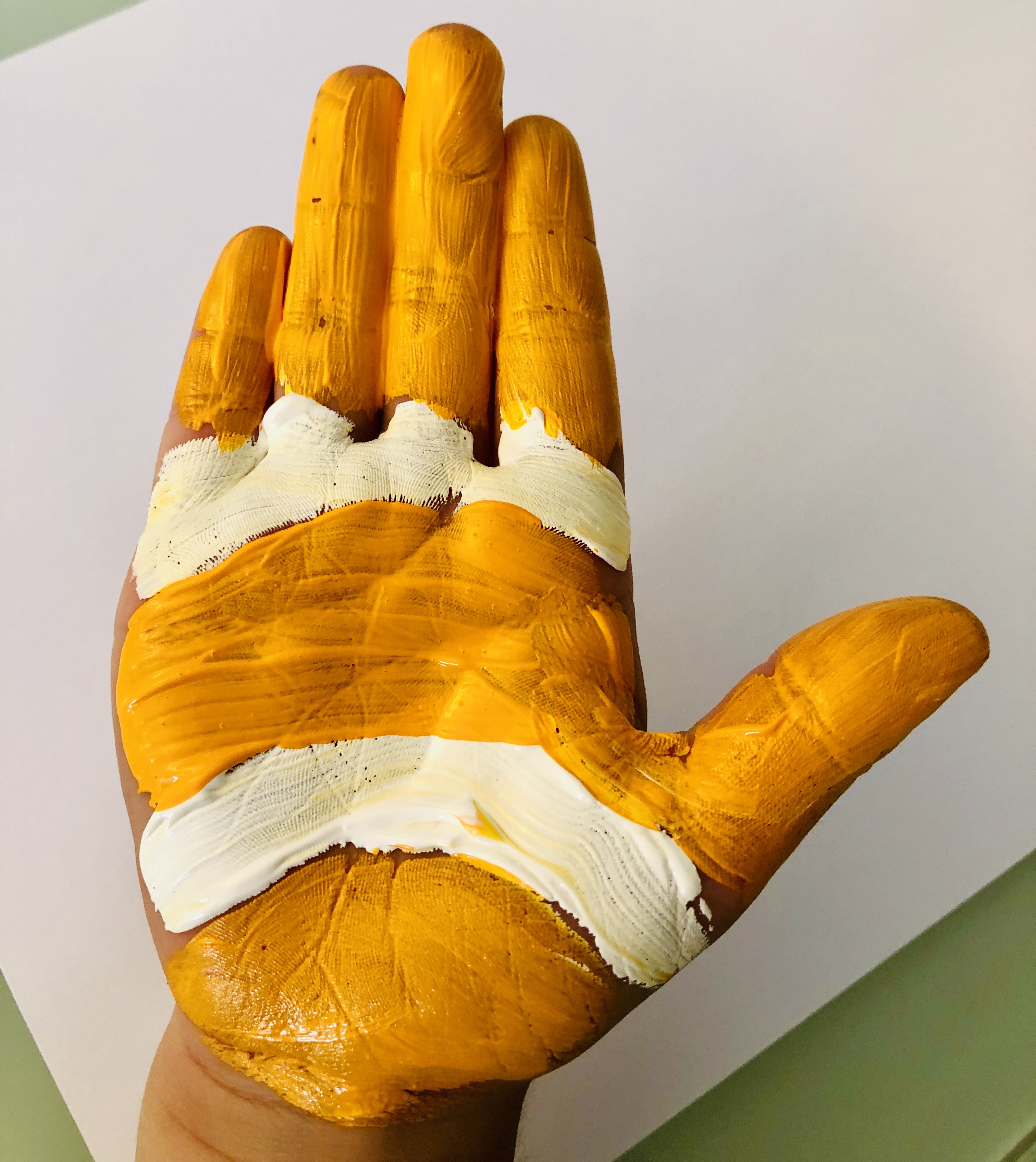
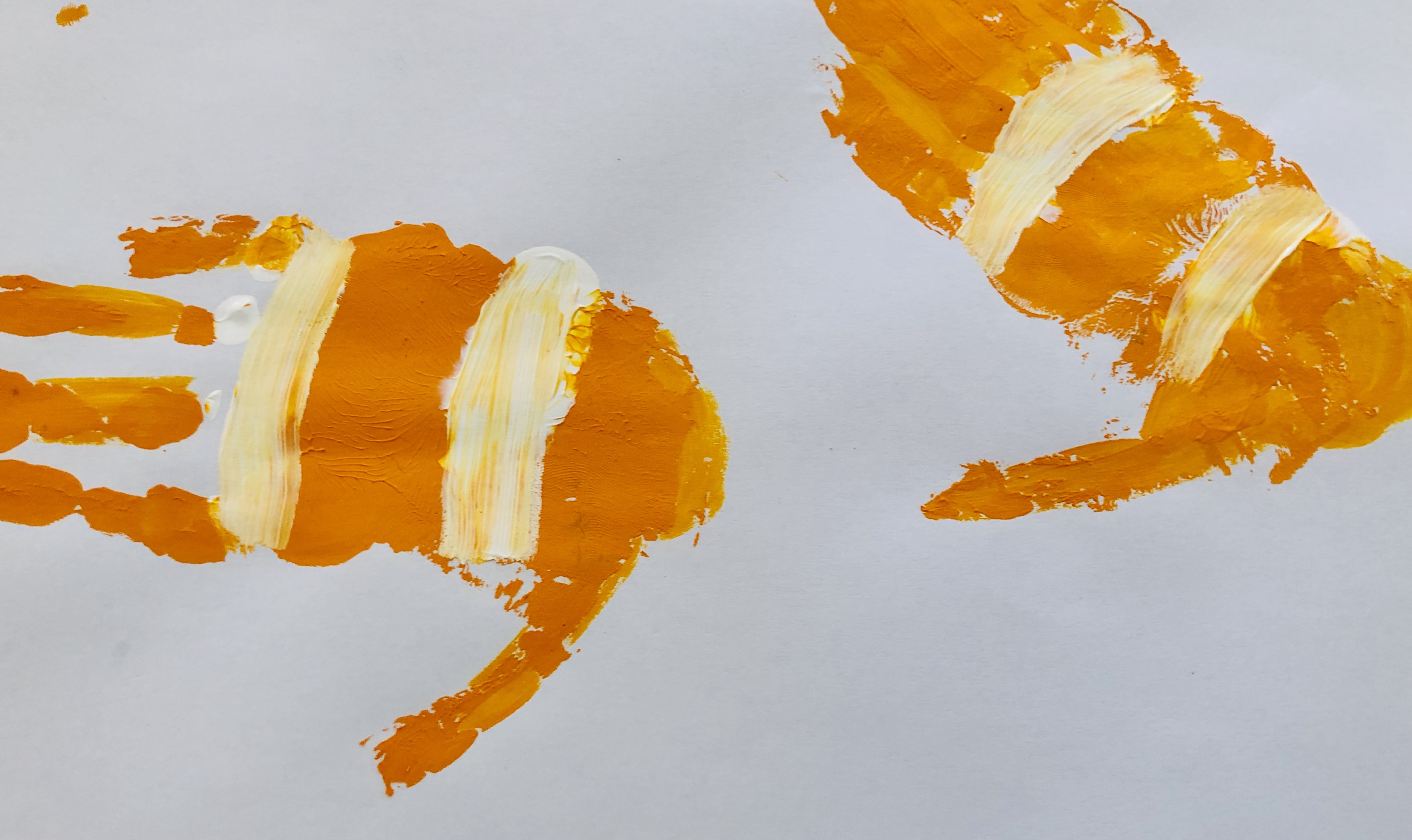
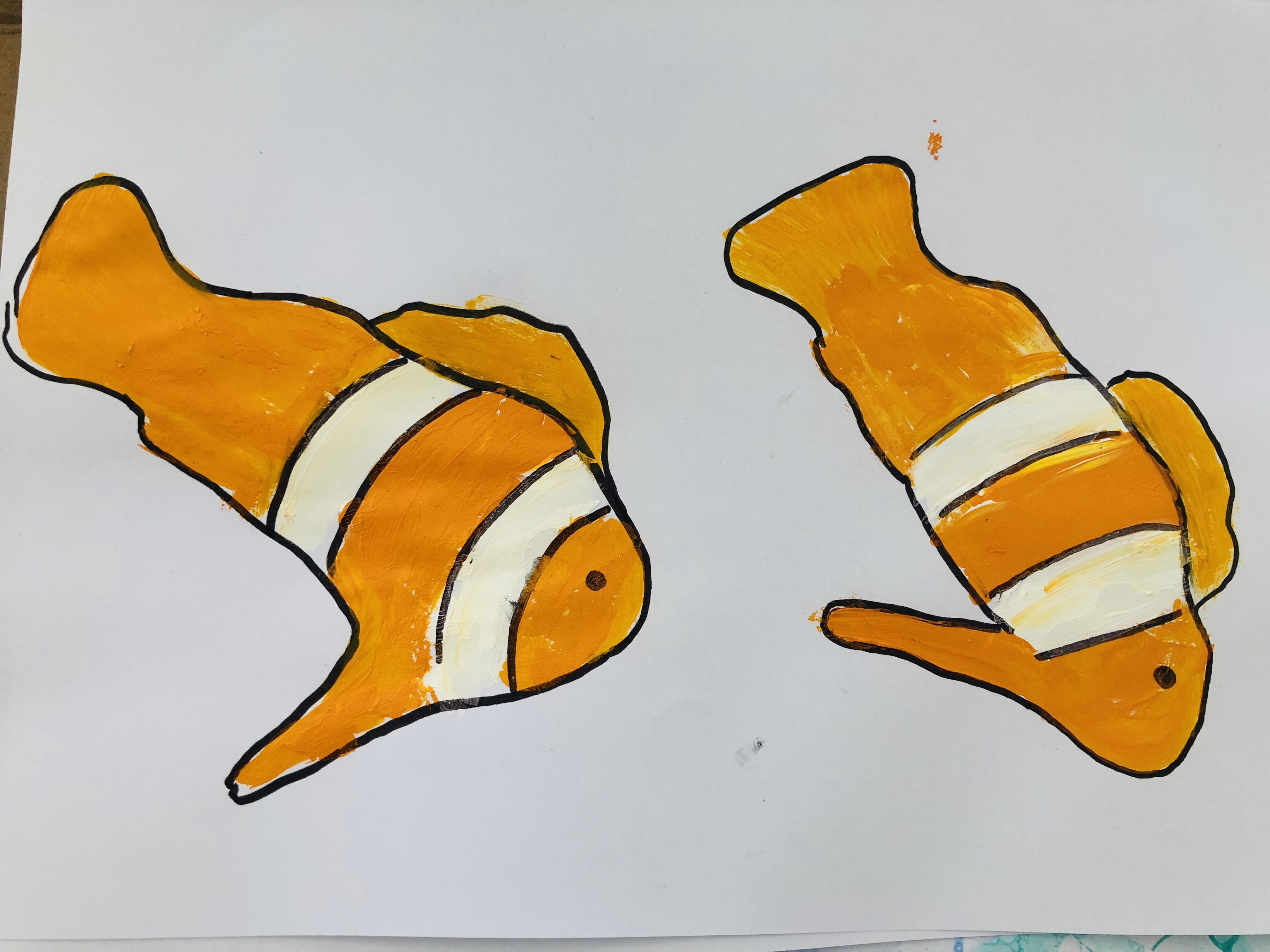
Yes, we noticed our mistake and corrected it in the final stage - clownfish have three stripes.
Interesting facts about octopuses:
- They have three hearts.
- They have no skeleton.
- The Caribbean reef octopus can completely change their colour from one moment to the next using specialised colour cells called chromatophores. Or simply said: they can disguise very well.
How to make it:
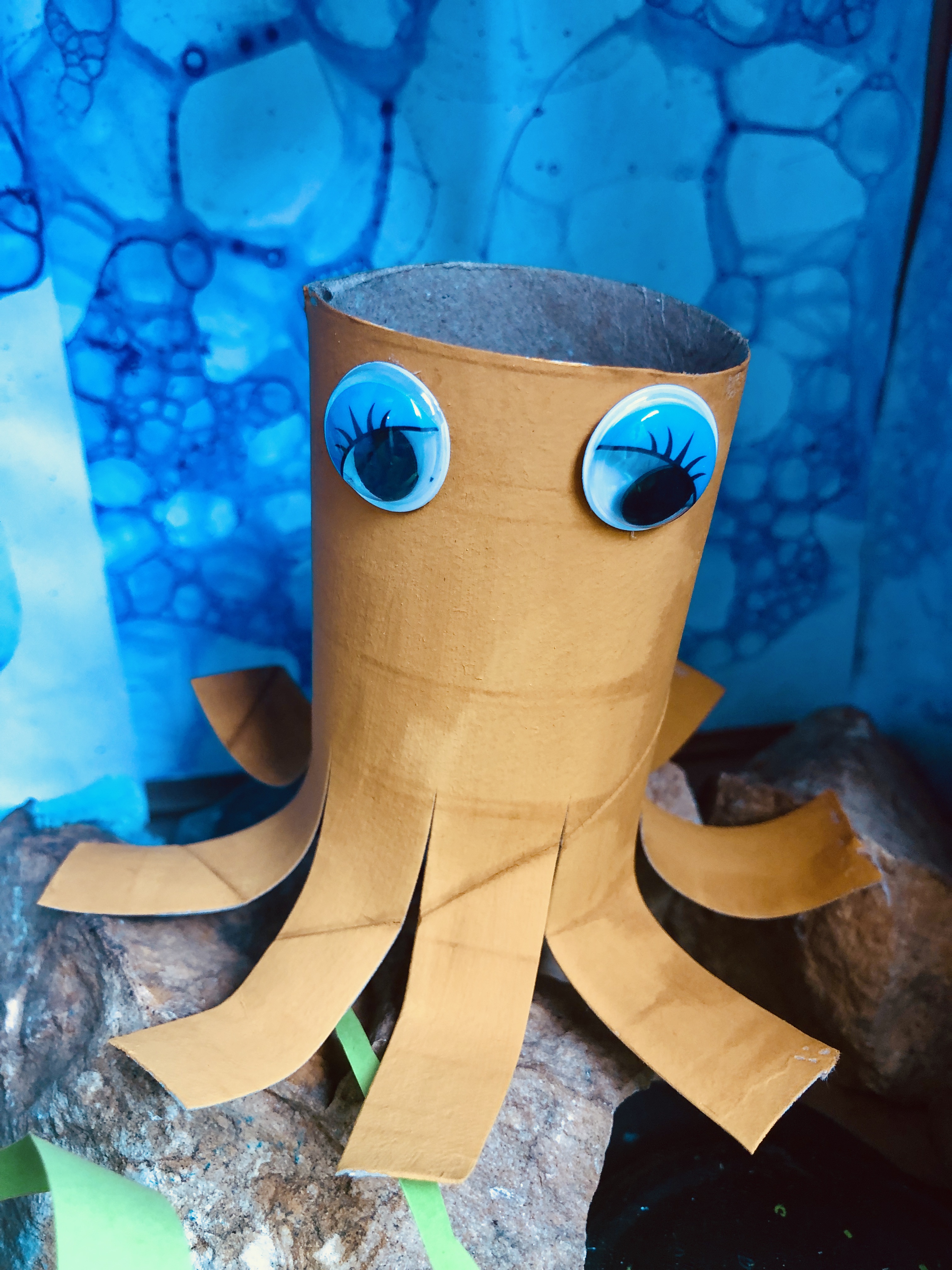
- Jellyfish have been around for millions of years, even before dinosaurs lived on the Earth.
- Jellyfish have no brain, heart, bones or eyes.
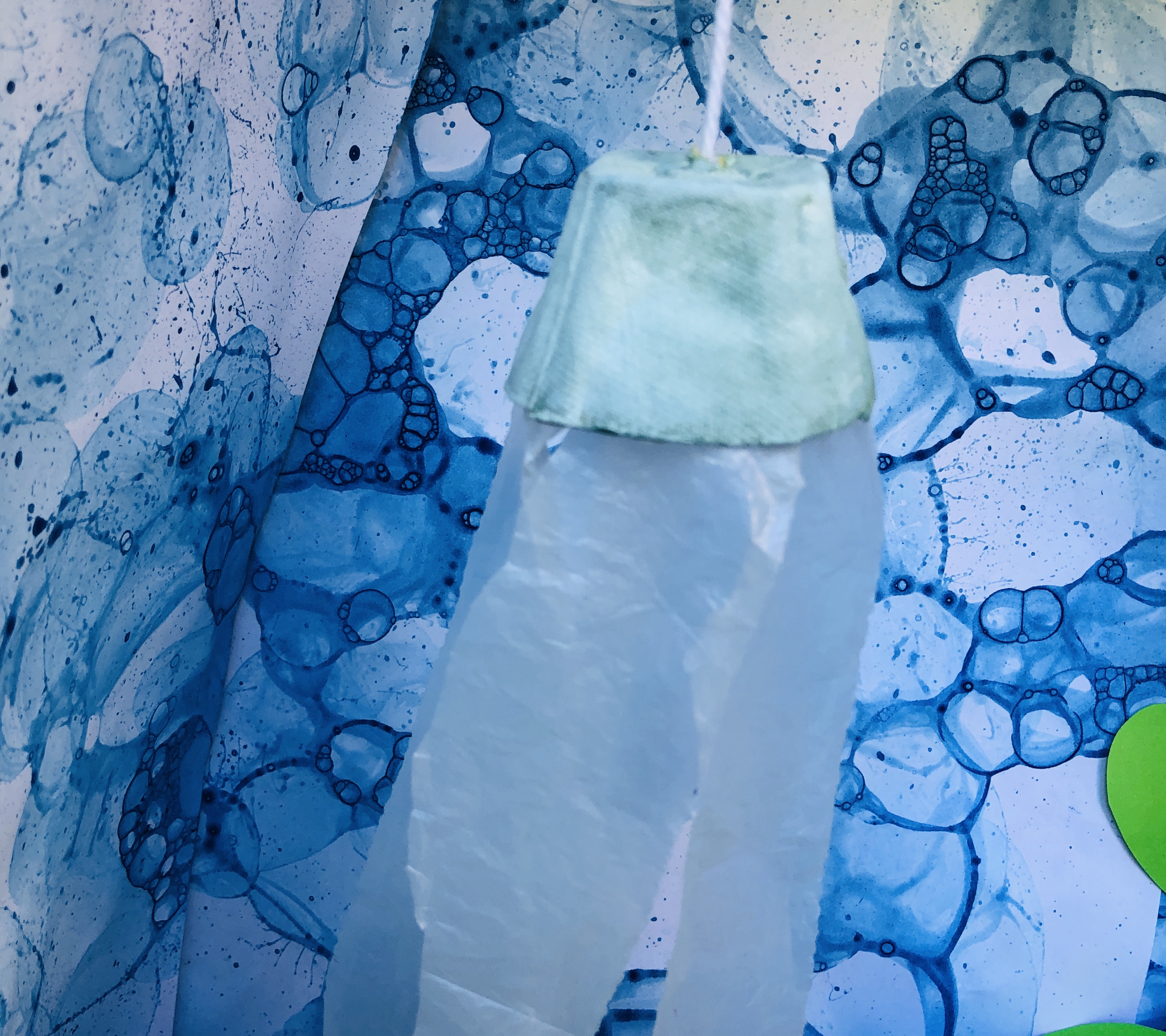
How to make it:
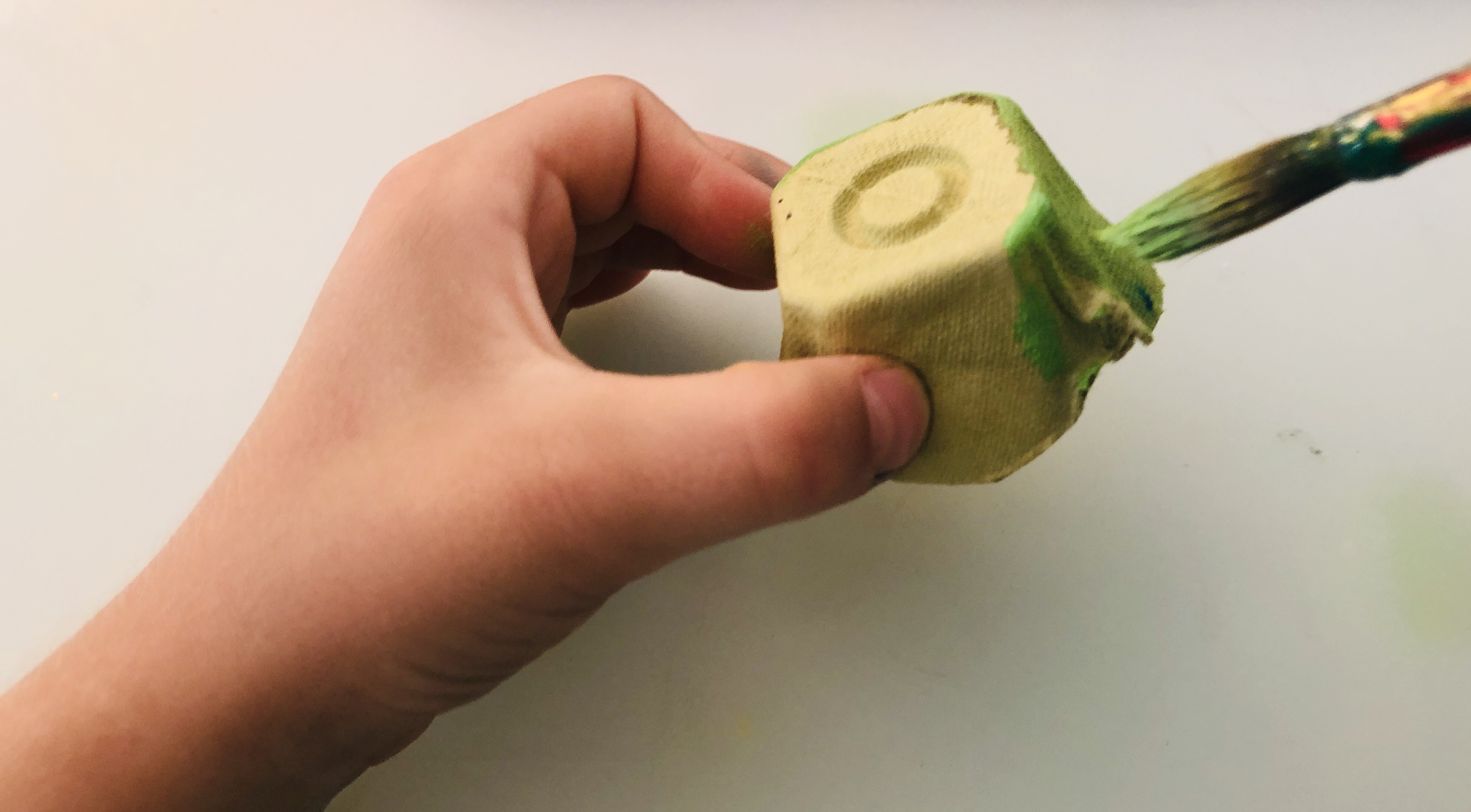
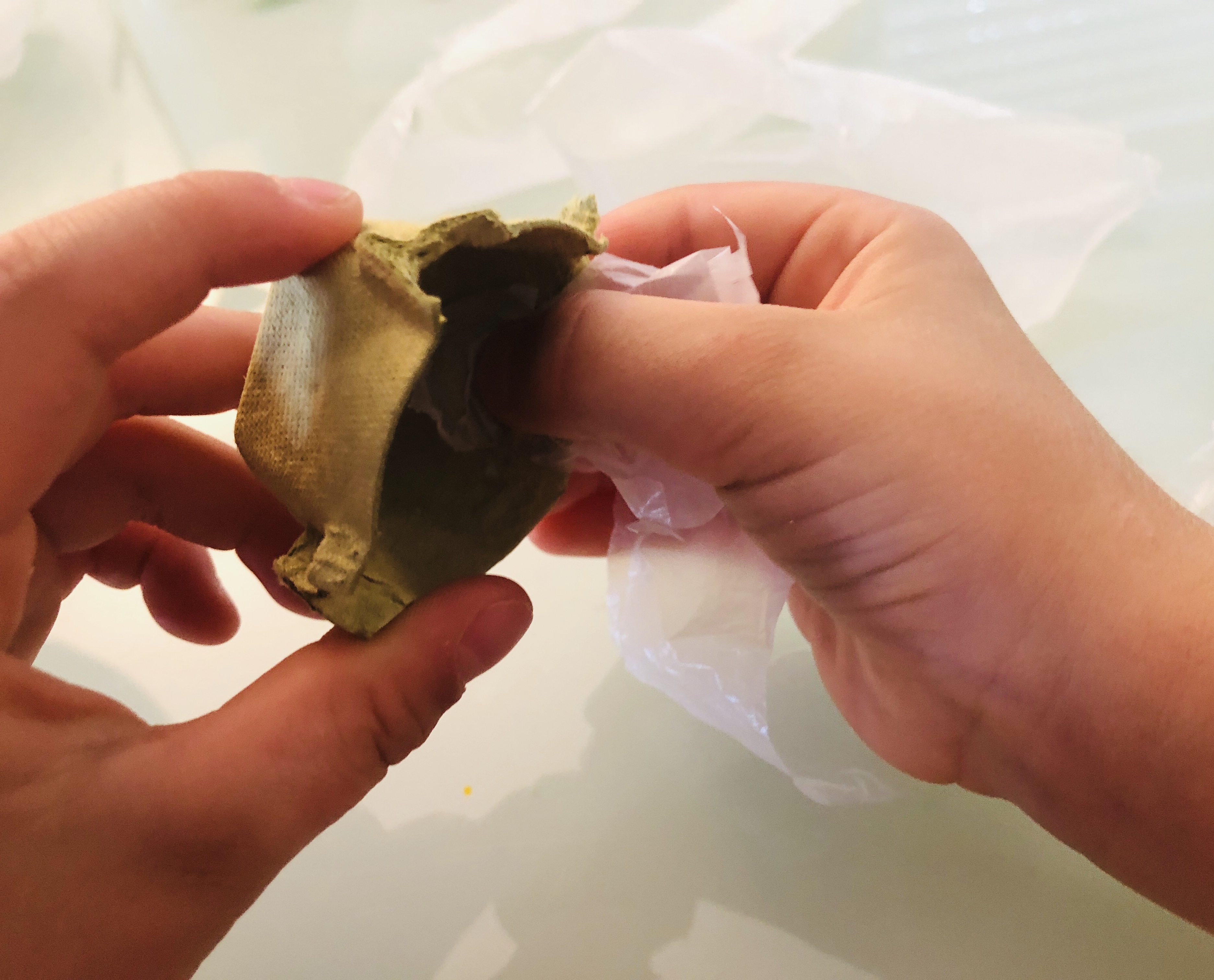
- Seahorses feed on plankton and tiny fish.
- Male seahorses bear the unborn young.
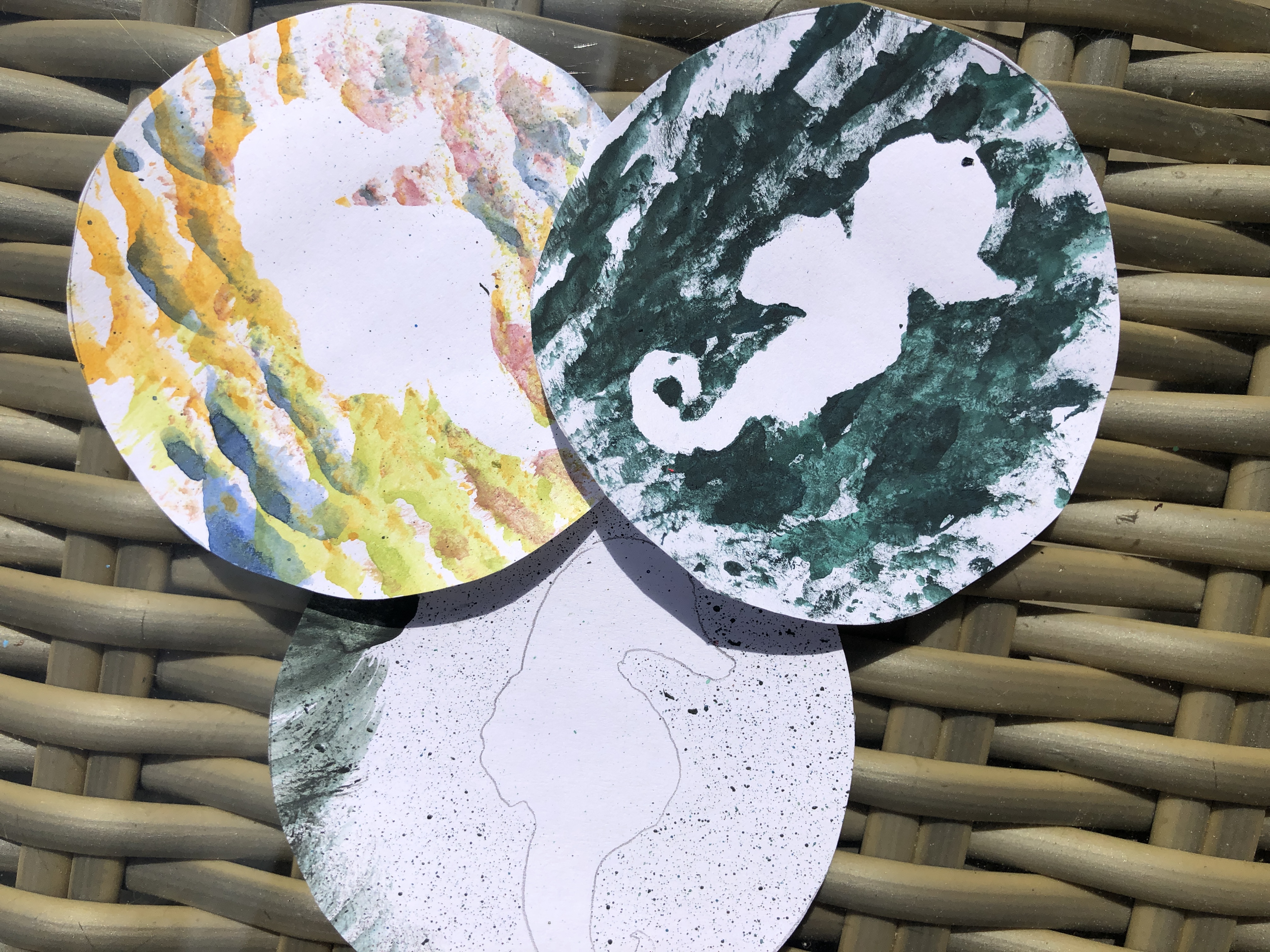
How to make it:
Cut out a seahorse shape and put it on a piece of paper. You can try several techniques for these.
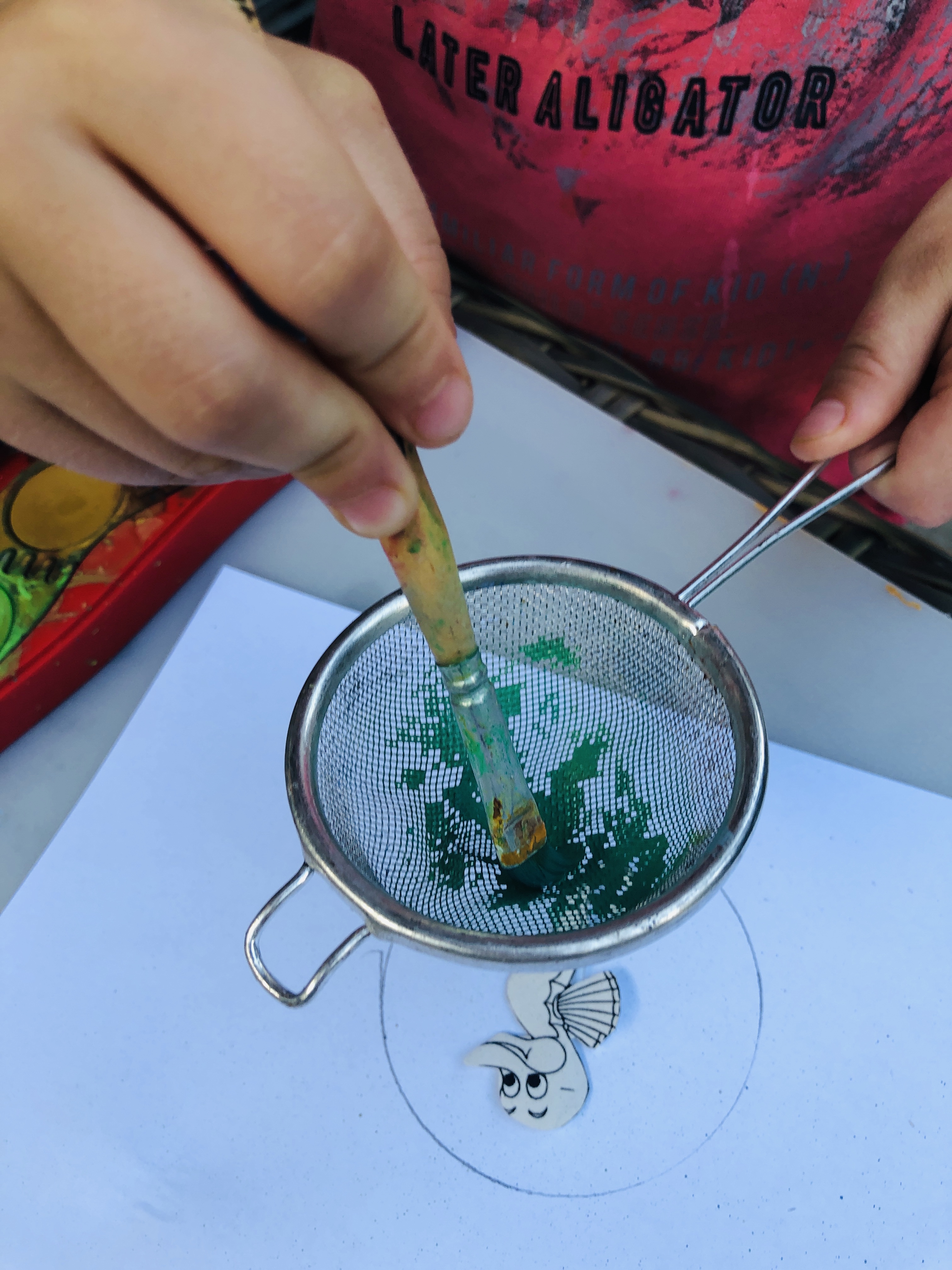
...and a packaging net (a mango was wrapped in this one) to stamp.
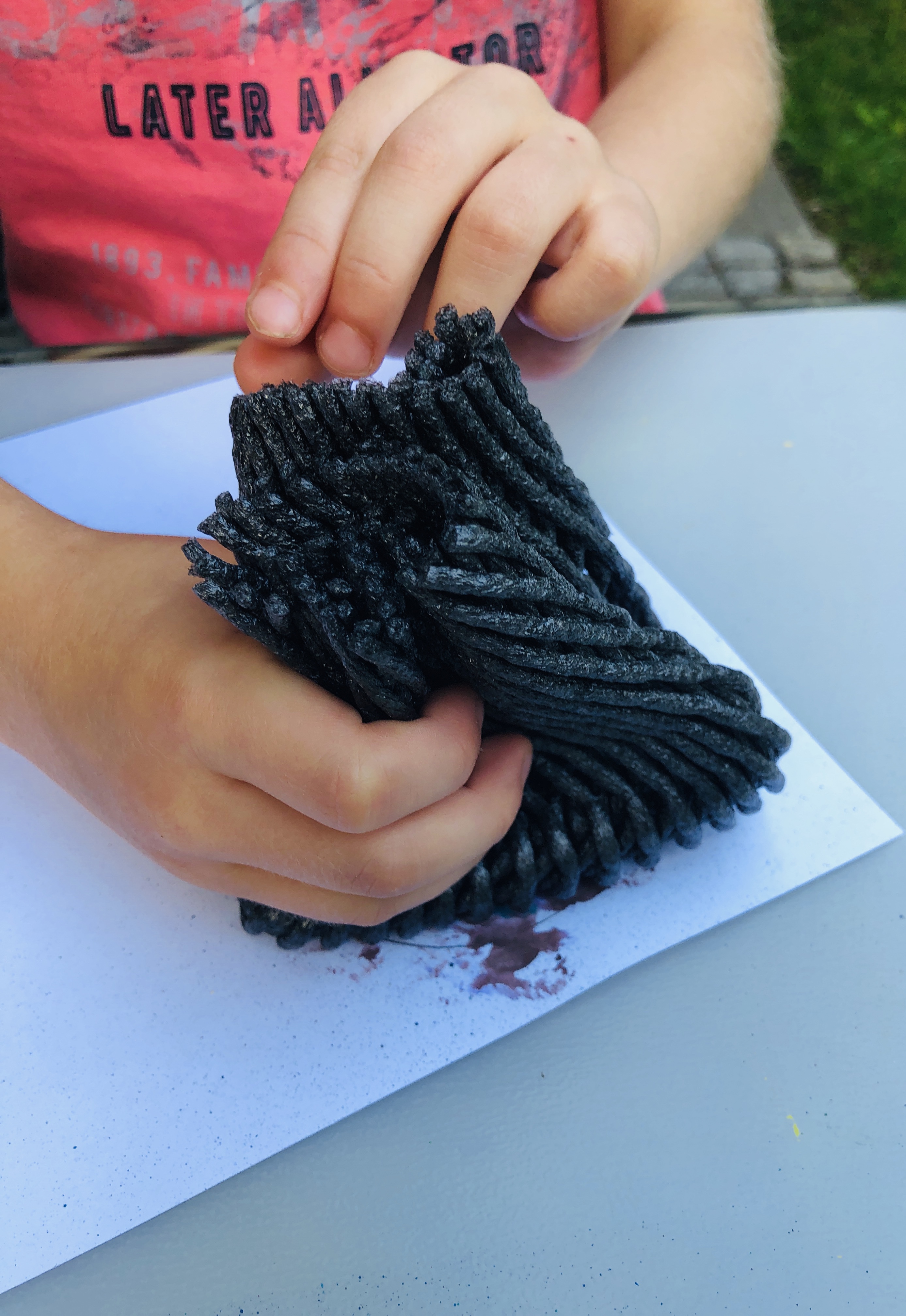
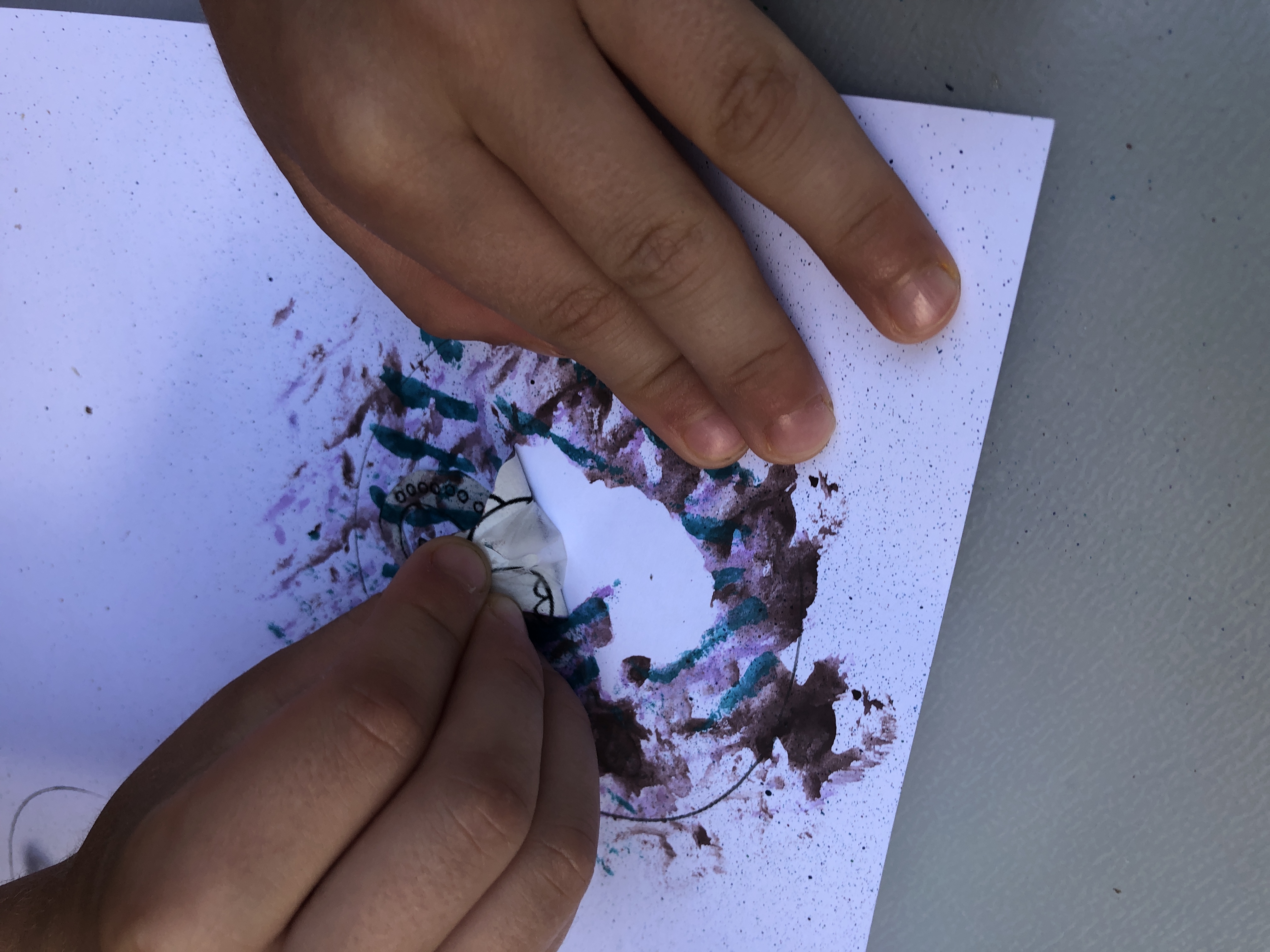
And finally - Mr Sharky.
Interesting facts about sharks:
- Shark skin feels similar to sandpaper.
- There are more than 465 different types of sharks.
- They don't have bones.
- They can have more than 30,000 teeth over the course of their lives.
- Females tend to be larger in most shark species.
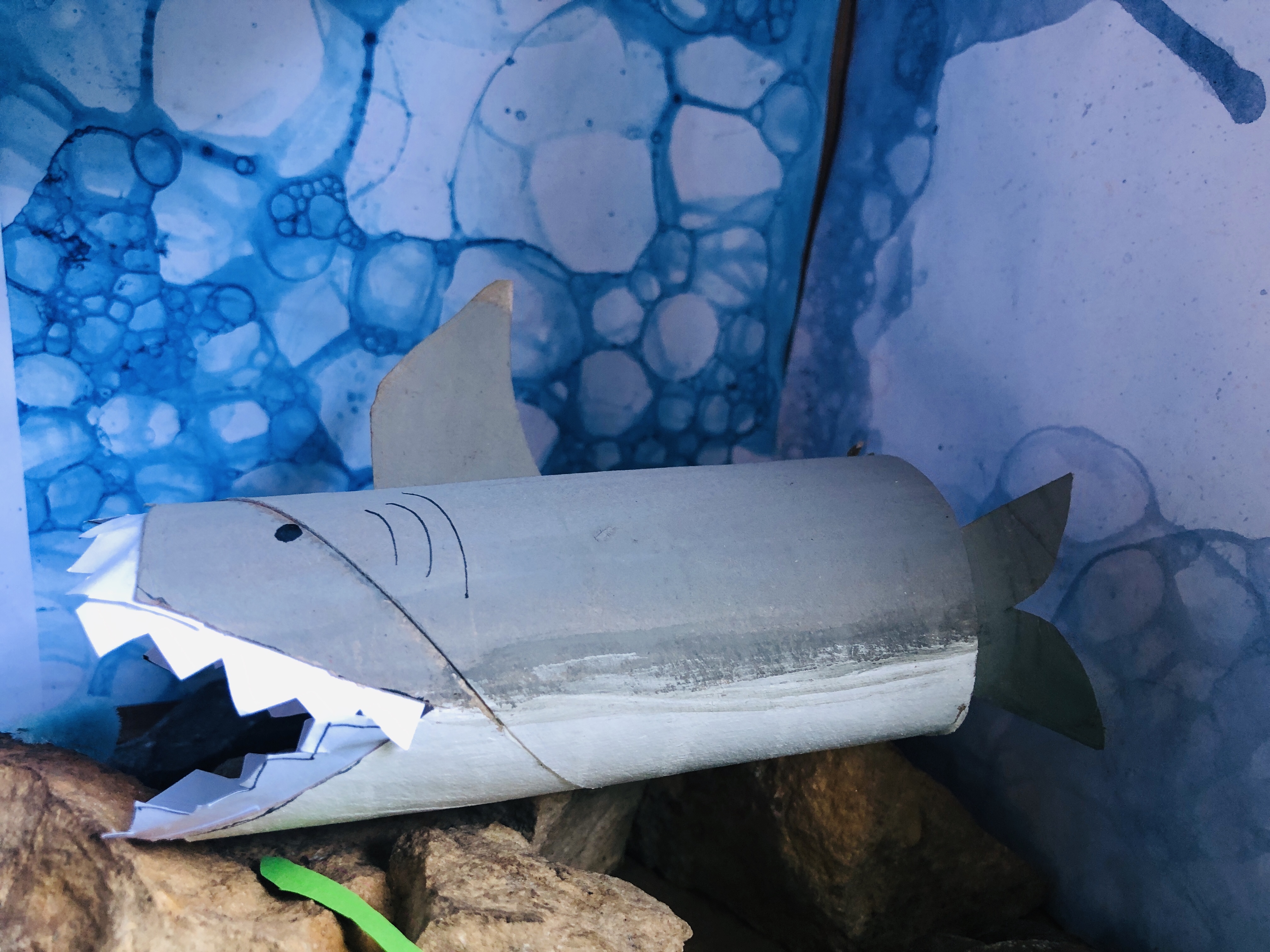
All you need for this one are a toilet paper roll for the body, a tail and fin.
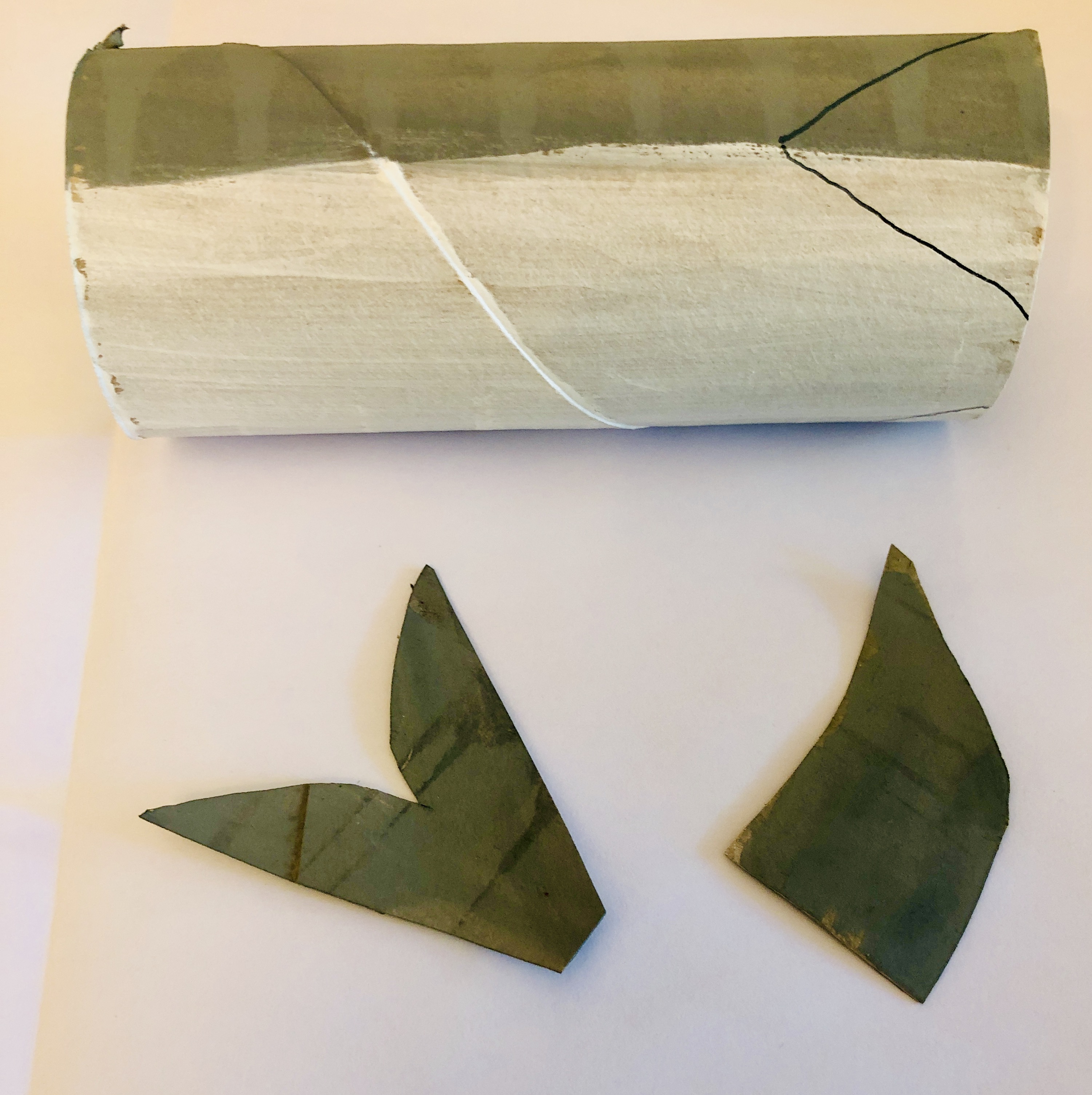
And most importantly - teeth!!
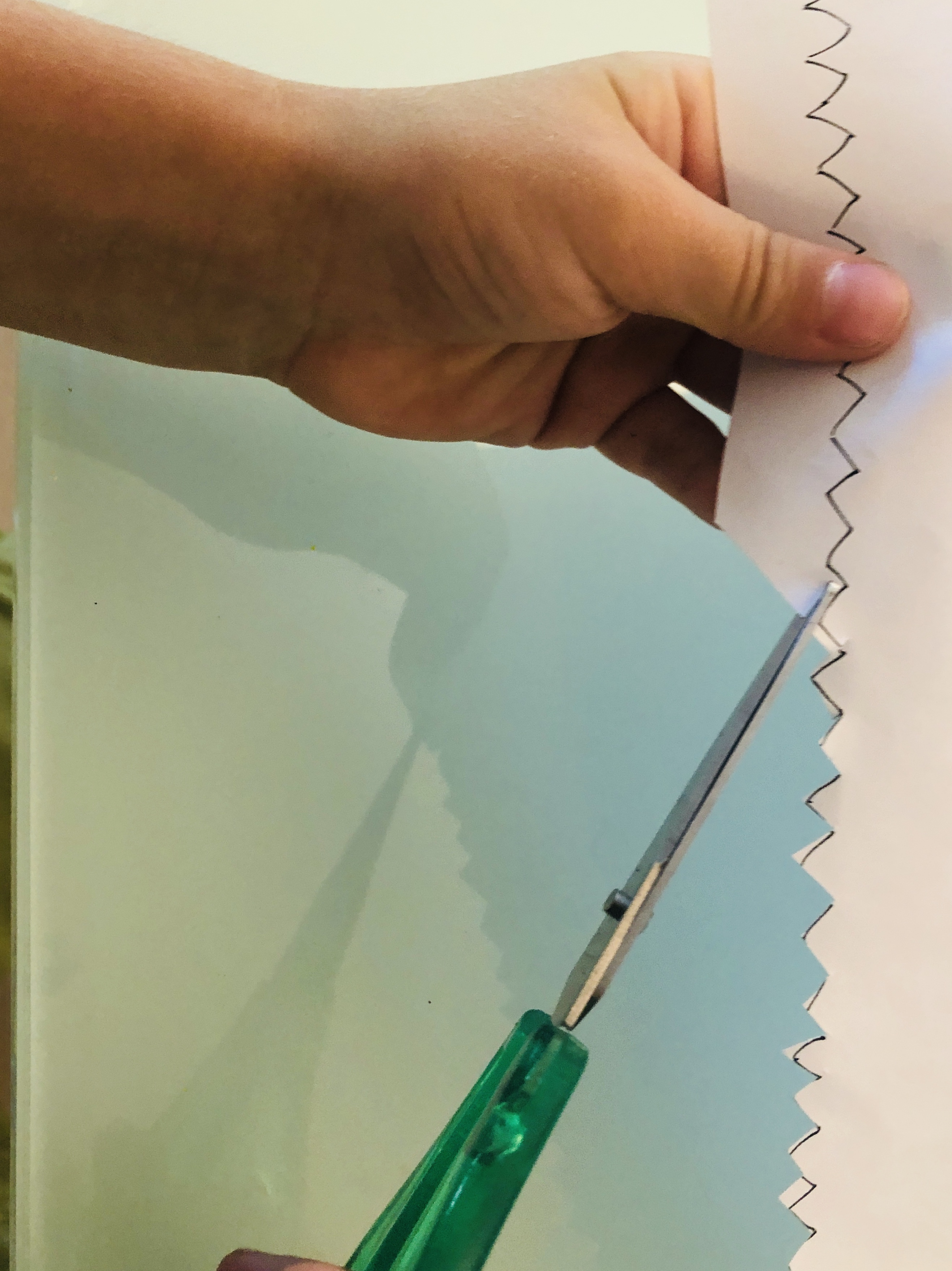
And that's it! The animals are ready for their new home :)
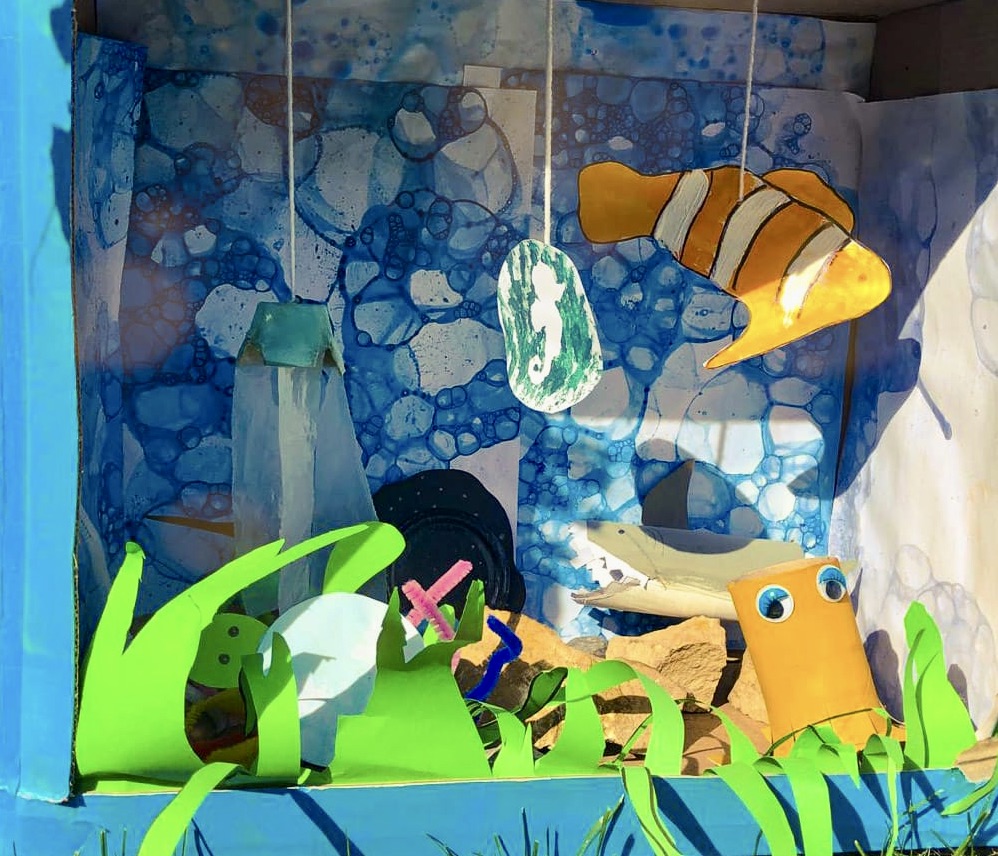
* Some of the books we used to learn these interesting facts are:
- Erne A. (2015). Wir entdecken Meerestiere. Wieso? Weshalb? Warum? Ravensburger Buchverlag.
- Woodward. J. (2017). Tiere: Die Tierwelt in spektakulären Bildern. München: Dorling Kindersley Verlag GmbH.
